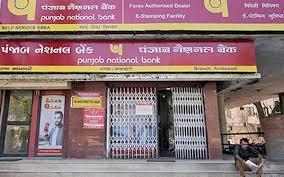Cushioned by a cooling inflation, the RBI-led monetary policy committee (MPC) has cut the repo rate by 50 basis points (bps) to 5.5% to give growth a big push.
The move is expected to reduce interest rates for borrowers while bank deposit rates will tend to fall.
This is the third consecutive interest rate reduction, with the MPC bringing the repo rate down by 25% bps first in February and then again in April.
The cut in repo rate by 100 bps this year comes amid global headwinds and concerns over trade war following US President Donald Trump’s reciprocal tariffs policy. The first cut in February this year came after May 2020, the period when the central bank had to tackle a rising inflation after the outbreak of the Covid-19 pandemic with rate hikes.
The RBI's six-member MPC, headed by Governor Sanjay Malhotra and consisting of three external members, voted five to one to lower the benchmark repo rate. The repo rate is the key rate at which the RBI lends to commercial banks.
The panel also cut the cash reserve ratio (CRR) by 100 basis points to 3%, a move that would enhance liquidity in the banking system.
The MPC changed its monetary stance to ‘neutral from ‘accommodative’. The future rate increase or decrease would thus depend on incoming data, with Malhotra saying that it may have limited space for further easing.
The standing deposit facility (SDF) rate under the liquidity adjustment facility (LAF) stood adjusted to 5.25% and the marginal standing facility (MSF) rate and the Bank Rate to 5.75%.
Inflation forecast for FY26 lowered to 3.7%
The RBI lowered its inflation forecast for FY25–26 to 3.7%, from the 4% projected in April.
Malhotra said headline inflation hit a nearly six-year low in April, aided by falling food prices and fuel deflation. Core inflation also remained stable despite global commodity volatility.
Retail inflation has been steadily declining and stood at 3.16% in April.
The quarter-wise inflation estimates are: 2.9% in Q1, 3.4% in Q2, 3.5% in Q3, and 4.4% in Q4.
The RBI maintained that risks to inflation outlook are “evenly balanced.”
GDP retained at 6.5%
The RBI retained its growth projection for FY26 at 6.5%, despite global uncertainties.
While external challenges like geopolitical tensions and trade policy shifts were threats, Malhotra was confident abut India’s growth trajectory on the back of a strong monsoon forecast and robust services activity.
Though India’s GDP growth at 6.5% for FY25 was slightly lower than past years’ averages, in the final March quarter this rose by 7.4%, the fastest in four quarters,.
For FY26, the RBI retained its quarterly GDP growth projections at 6.5% for Q1, 6.7% for Q2, 6.6% for Q3 and 6.3% for Q4.
"Services sector is expected to maintain its momentum. However, spillovers emanating from protracted geopolitical tensions, and global trade and weather-related uncertainties pose downside risks to growth," Malhotra said.
The Indian economy is progressing well, broadly on expected lines despite global uncertainties, he added.
CRR slashed by 100 bps
In a bid to ease liquidity, the RBI announced a cut in the CRR by 100 bps to 3% from 4% earlier. The reduction will be implemented in four tranches of 25 bps each, from 6 September to 29 November.
The move is expected to inject Rs 2.5 lakh crore into the banking system, boost lending and lower funding costs.
"We have decided to reduce the CRR by 100 basis points from 4% to 3% of net demand and time liability. This will be done in a staggered manner through the course of the year in four equal tranches of 25 basis points each, coming into effect the fortnight beginning September 6, October 4, November 1, and November 29 of this year."
“Besides providing durable liquidity, it will reduce the cost of funding of the banks, thereby helping in monetary policy transmission to the credit market,” Malhotra said.
CRR is the proportion of deposits that banks need to set aside as cash.




